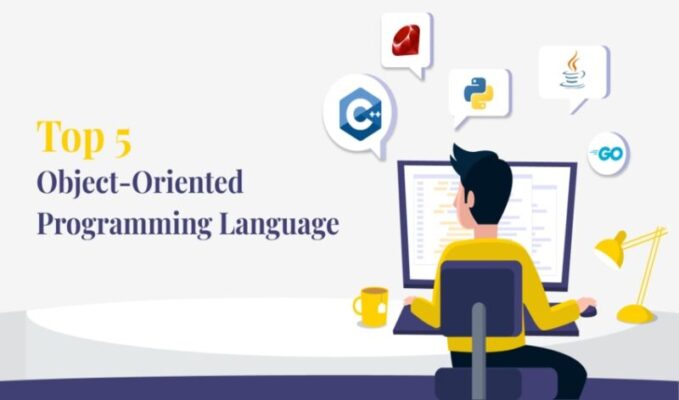OOP (Object-Oriented Programming) is a kind of programming language model that is organized by combining a group of variables and functions in a single unit which is called an object. The objects are then arranged into classes where every object is grouped.
Basically, in simple words, we can say that OOP is a programming paradigm that is based on the concept of Objects that contains Data, in the form of Fields, Code, and in the form of procedures that is called Methods.
If considered broadly, there are four basic principles of Object-Oriented Programming:-
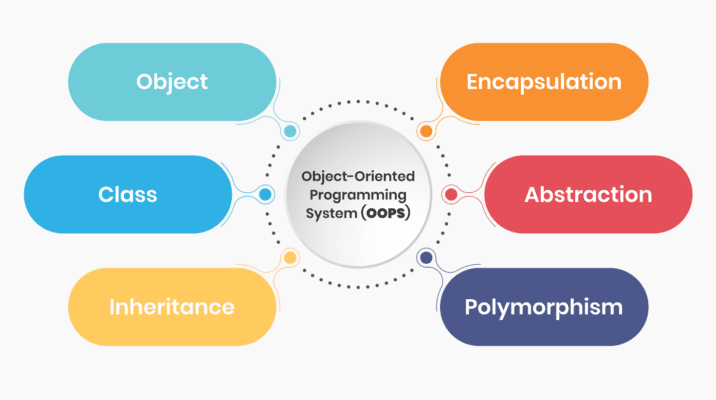
- Encapsulation
Diverse objects that are present under one program can automatically communicate with each other. If the developer wishes to stop the interaction of objects with each other then they will encapsulate every object individually in the form of classes. The process of encapsulation states that classes cannot communicate or change along with any particular variable and function of an object.
- Abstraction
Abstraction is just like the extension of encapsulation as it can hide some properties and methods from being shared with outer code for making the interface of the object easy to understand. Developers specifically make use of Abstraction for different beneficial causes. In short, we can say that Abstraction helps in isolating the impact of changes made on the code for securing the inside code if something wrong happens and the particular change will only affect the present variables, not to the whole outer code.
- Inheritance
Inheritance is the process of extending the existing code functionality for removing the repetitive coding work. The elements of HTML code contain a text box, a checkbox and a select field with some properties the are common with particular methods.
In this, there is no need of redefining all the properties and methods for each HTML element as you can define all of them at once in a general object. Give a name to the object like “HTMLElement” will help other objects to inherit all of its properties and methods and you can avoid the unnecessary work of repetitive coding.
- Polymorphism
Polymorphism means “one name many forms” that allow developers to provide multiple elements depending on the object type. This will permit developers to redefine the whole work and define how it can be done by updating the parts in which it was previously performed. Polymorphism terms are known as overriding and overloading.
Major application areas of Object-Oriented Programming languages covers Real-Time Systems, Simulation and Modelling, User Interface Design like Menu and Windows, Object-Oriented Databases, AI and Expert System, Decision Support and Office Automation Systems and more such.
Examples of Object-Oriented Programming include Scala, Ruby, Smalltalk, Emerald, JADE, Raku, Self, and Eiffel.
Top Object-Oriented Programming Languages
1. Java
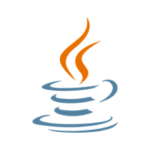
Java – a general-purpose programming language that is class-based and object-oriented and designed especially for implementing all the possible dependencies. It allows developers to write once and run anywhere which means the compiled Java code has all the capabilities to run on every single platform that has the support of Java without needing recompilation. Java apps are compiled to byte code that can run on any JVM (Java Virtual Machine) disregarding the basic computer architecture. Oops, concepts in Java is the main thing that lies behind object-oriented programming.
Factors that proves Java is the best programming language of all
- An easy-to-learn language with clean and clear syntax to understand.
- Based on object-oriented language that has data and behavior both.
- Java is platform-independent as you can write once, and run anywhere.
- Robust platform that removes error-prone codes by focusing on compile-time error.
- Java is a highly secure language.
- The multithreading feature allows us to write the program and perform multiple tasks simultaneously.
- A portable platform that has no implementation-dependent features.
- It is a high performing, interpreted language.
Drawbacks of Java
- Slow and has poor performance because of the compilation and abstraction level of virtual machine.
- It offers an unattractive look and feel of the GUI.
- Java has no backup facility.
- It always required a huge memory space.
- The codes of Java are verbose and complicated.
The applications of Java Programming Language covers –
- Mobile Applications
- Enterprise Applications
- Desktop GUI Applications
- Web-based Applications
- Embedded Systems
- Big Data Technologies
Big Companies Using Java –
- Airbnb
- eBay
- Groupon
- Pandora
- Spotify
- Square and the list is long …
2. Python
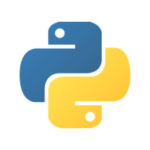
Python is an interpreted, general-purpose, high-level programming language. The design philosophy of Python focuses on code readability with the use of significant whitespace. Python’s language constructs as well as an object-oriented process for assisting developers in writing clear and logical coding for small as well as huge-scale projects. Oops, the concept in Python focuses on writing reusable code. There is no requirement to declare the variable type in Python as it is a dynamically typed language. Read the best python books and learn more.
Imperative statements to consider in Python
- As it is a high-level programming language, it is easy to code and learn the language.
- Python is a free and open-source language that you can easily get from the official website.
- Python is based on oops concepts of objects, classes, encapsulation, and more such.
- Python is the best option for crafting graphical apps with Python.
- Python is a high-level language with extensible feature support.
- It is an integrated and portable language.
Disadvantages of using Python
- The speed of Python is slow as compared to C and C++.
- Not a good choice for mobile development.
- You should avoid selecting Python in memory-intensive tasks.
- It has limitations with database access.
- Python gives more run time errors and that’s why need to focus on testing.
Top Python Applications
- Game Development
- Web Development
- Data Science and Data Visualization
- Desktop GUI
- Business Applications
- CAD Applications
- Embedded Applications
- Web Scraping Applications
Reputed Firms using Python
- Dropbox
- Netflix
- Spotify
3. Ruby

Ruby is an interpreted, general-purpose, high-level programming language. Ruby can be dynamically typed and makes use of garbage collection. Also, it provides full support for programming paradigms that covers object-oriented, procedural, and functional programming. The language is specially focused on faster software development and that’s why called a “startup technology”.
Features of Ruby
- Object-oriented language
- Highly flexible
- Impressive features
- Better visual appearance
- Dynamic typing and Duck typing
- Portable platform
- Exception handling and Garbage collector
How you can leverage using Ruby
- Time-efficient language that reveals its potential in very little time.
- Ruby has many different helpful tools and libraries.
- It has a strong and active community.
- Ruby has a strong adherence to standards
Points where Ruby lacks
- Ruby is less flexible in managing simple tasks and features.
- It provides no support for continuous updates and evolvement.
- The performance time of Ruby is very less especially when the project is big.
Popular Companies using Ruby
- Airbnb
- Basecamp
- GitHub
- Clarity
- Dribble
- Crazyegg
4. Go

Go is a compiled programming language, statically typed which is designed by Robert Griesemer, Rob Pike, Ken Thompson by Google. Go programming language is referred “Golang” because it has a domain name “golang.org”.
Features of Go programming language
- It offers huge support for simplicity and consistency.
- Object-oriented language.
- Offers great concurrency.
- Supports Pointers.
- Go has a super-fast compiler.
Highlights of Go Programming Language
- Go is a super-fast language.
- An easy to learn programming language.
- Go is a statically typed language.
- It has a standard library.
- It has interfaces and any struct can satisfy an interface by implementing methods.
Points that we didn’t like about Go Language
- Its interfaces are implicit.
- Go does not have generics.
- It provides poor library support.
- Unpredictable and difficult community.
- Go has fractured dependency management.
Applications of Go Programming Language
- System and network programming
- Machine learning
- Big data
- Audio and video editing and more such …
Well-known companies adopted Go Programming Language
- Uber
- Twitch
- SoundCloud
- SendGrid
- Dailymotion
5. C++
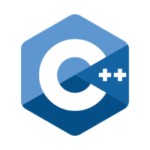
C++ is a general-purpose powerful programming language. It is used for creating operating systems, games, browsers, etc. C++ provides full support for diverse ways of programming such as functional, procedural, object-oriented and more such. All these make C++ a very powerful and flexible language. Oops concept in C++ is using objects and classes for its functioning.
It is the oldest and most famous programming language that is still shining and dominating the realm of programming. It is an upgraded version of C programming language and its major updations cover object-oriented programming methodology, operator overloading, namespace feature, error and exception handling.
Facts of C++ programming language
- Simple and platform dependent
- Object-oriented language
- Contains rich library
- Powerful and fast language
- Compiler based language
- Syntax based language
- Mid-level programming language
Advantages of using C++
- A portable language that allows users to run the current program on diverse operating system easily.
- Object-oriented programming language that covers concepts like inheritance, classes, data abstraction, polymorphism and encapsulation.
- It is a multi-paradigm language.
- C++ permits low-level manipulation of data.
- C++ has big community support.
Disadvantages of using C++
- C++ has some security issues.
- Use of pointers consumes a lot of memory.
- It does not have a garbage collector.
- C++ provides no support for built-in threads.
Real-world apps of C++
- GUI Based Applications
- Gaming Applications
- Operating systems
- Browsers like Firefox and Mozilla
- Baking applications
Popular tech companies using C++
- NASA
- Microsoft
- Opera
Comparing Top 5 Object-Oriented Programming Languages
Wrap Up
The software industry is evolving every single day and introducing something new to the market. In such a situation, you have to be up-to-date with the current technological changes to stay competitive in the market. If you are looking to get all the details about some top object-oriented languages then this article will help you. We had tried to portray everything about the object-oriented programming language.
Patrick R, A techno-commercial leader heading Intuz as Director of Growth With over 12 years of experience in the field of Information Technology. His experience and expertise will entice developers and business entrepreneurs with rich content on the latest technology stack.

